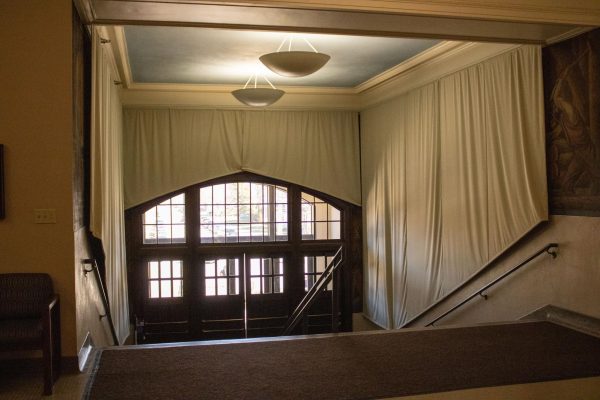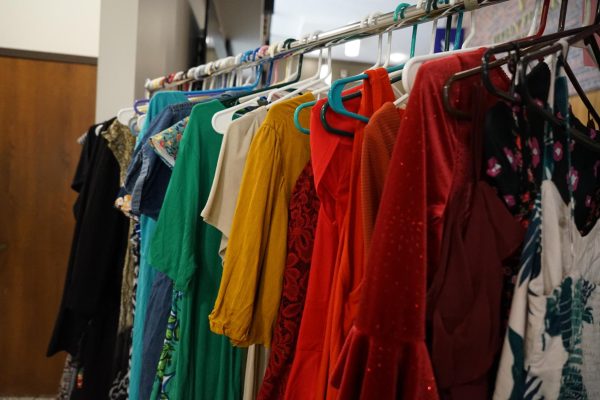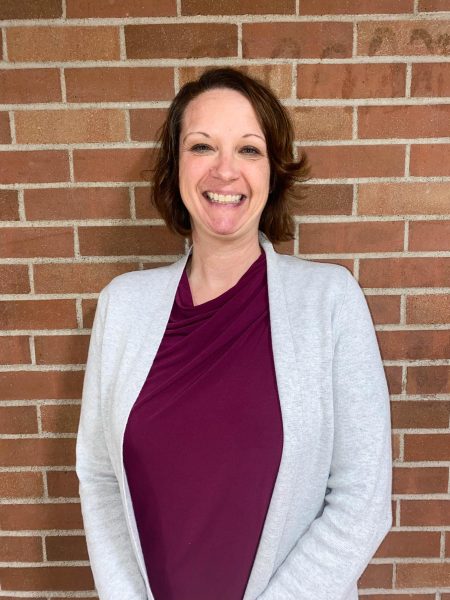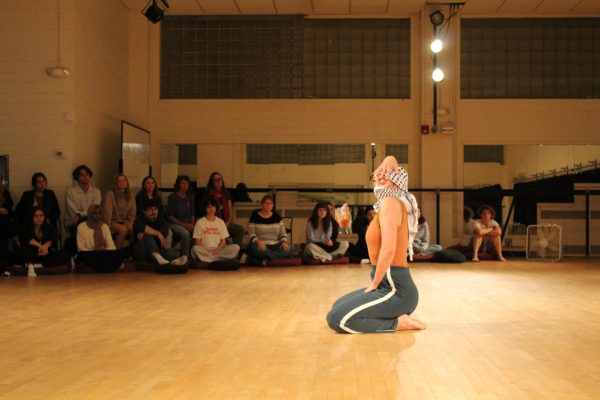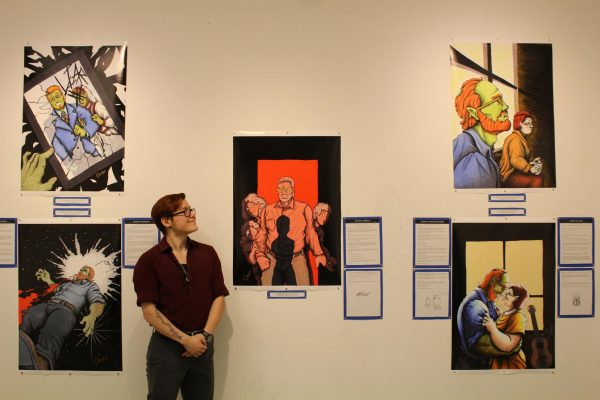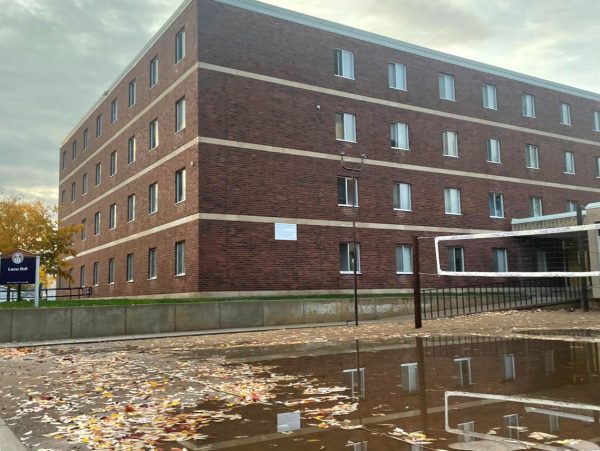Students develop nutrition curriculum
April 5, 2017
Warriors propose FUN FridayS in South Dakota, includes community garden

Elizabeth Pulanco / Winonan
In spring 2016, a group of nutrition minor students from Winona State University started a project that would end with a trip to South Dakota and a nutrition program benefiting one of the poorest communities in the United States.
American Horse School is located within the Pine Ridge Indian Reservation, which contains both Allen and Kyle, S.D. According to Janet Macon, a health, exercise and rehabilitative sciences professor at Winona State, American Horse School has been awarded the federal “Fresh Fruits and Vegetables Program” grant for 2016-2017.
Macon and recreation, tourism and therapeutic recreation professor James Reidy took a trip to the reservation and learned about how the low-quality soil does not support agricultural food production.
“The Lakota communities have sustained themselves for generations on processed foods transported onto the reservation; they have had little access to fresh fruits and vegetables,” Macon said.
The federal grant provides healthy food, but without a curriculum which Macon said increases the chance of a shift in dietary behavior.
In her lifespan nutrition course, Macon discussed her trip to the reservation and the need for a curriculum. Seniors Jenny Tuttle, Lexie Mertens, Heather Sharkey and Nick Neely volunteered to spend their free time developing the curriculum.
For Mertens, one story Macon told about carrots stood out to her and showed her the importance of a nutrition curriculum.
“[Macon] said that the first time she went out to the Pine Ridge reservation, she brought a bag of carrots in to a house or a classroom and three kids came up to her and started eating them like they were candy,” Mertens said. “They had never seen carrots before.”
Throughout the spring, Sharkey wrote the literature review about the impact of other nutrition programs in reservation communities and studied the different nutrition programs used in Minnesota, and in the summer, the students began fundraising for the program.
According to Sharkey, the group set up a Yankee Candle Fundraiser and went around the Winona community to look for fundraising opportunities.
“I went to Hyvee and sought out a donation from them,” Sharkey said. “I met with the store director and he was very nice and gave us a donation and let us have some table time outside of the store to raise funds for people and explain what we were doing.”

Tuttle, another student working on the project, was also able to collect funds through the Undergraduate Creative Project and Research grant.
After the fundraising, the development of the curriculum began.
Tuttle said the program was focused on sustainable healthy eating habits and kindness.
Sharkey said the students will create journals and keep track of their healthy eating habits. They will also be competing with other students and classes for prizes.
“When they record their fruit and vegetables in the journal, they tally them up and we have a big carrot poster that they fill up to reach a goal at the end of the program,” Sharkey said. “We made the goal very reachable because we want them to succeed.”
Mertens said the kindness lessons include thank you notes and organizing random acts of kindness. Overall, there will be six lessons on nutrition and six lessons on kindness.
The curriculum, called FUN FridayS, will reach 75 students in third, fourth and fifth grade, Macon said. The program officially started on Friday, March 31.
At the beginning of March, Sharkey and Kendra Durst, a senior public health student went to South Dakota with Reidy and Macon to present the different lesson plans to the administration at the American Horse School.
“Just seeing the facial expressions when we were talking about the individual lessons, with the teachers and administrators, you could almost see the wheels turning and what they were thinking,” Durst said. “You could tell that it wasn’t a lesson plan that was put together in a month.”
During their trip to South Dakota, Durst and Sharkey also received a tour around the American Horse School and got to learn more about the Lakota culture.
“We really learned more about the Lakota culture and how their culture plays into their communities and their school system because it is very prominent in their K-12 system,” Durst said.
According to Durst, the school system has been having issues with gangs and violence and the culture classes have been a way to prevent some of the violence by showing how all of the students are connected through their Lakota culture.
Along with the nutrition curriculum, the school is hoping to plant a community garden. Once the garden is planted, different lessons within the nutrition curriculum will be focused on activities within the garden.
When creating the nutrition curriculum, the students had to take the Lakota culture and the poverty level into consideration.

“Coming in as outsiders, we don’t want to demonize any of their staple foods because that is just going to make them feel bad and that is not our intention. We want to make sure they are aware of the different food that is out there,” Sharkey said.
The poverty level of the individuals in the area also has an impact on their nutrition level and quality of life.
“They may be aware of these foods and see them on the shelves of their grocery stores, but not many of them have the ability to afford those foods as a family,” Durst said.
After presenting the curriculum, both Durst and Sharkey said the school’s administration was receptive and welcoming.
“You see the impact that you make at the small community level of the people that we got to meet when you hear them talk about how this will impact their whole community and not just the students they are teaching,” Durst said.
According to Macon, the students will continue to work with American Horse School and analyze the feedback as they deliver the lesson plans in their classrooms. Macon said Little Wound School, another K-12 school within the Pine Ridge Indian reservation, is also interested in the FUN FridayS curriculum.
“The students, Dr. Reidy and I have given the American Horse School administrators our permission to share the lesson plans with other reservation schools like Little Wound,” Macon said.
For Macon, watching the students participate in this project has been inspiring.
“This project has been immensely rewarding. I am energized in my own commitment to this project every time I meet with these students, review a component they’ve been working on, or otherwise interact with them,” Macon said.
For the students, working on this project has given them real world experience in a field they are passionate about.
“Just knowing that we are doing something better for someone else and the fact that one idea can spark so much motivation and interest from a small group of students was incredible,” Mertens said.
By Elizabeth Pulanco




























































